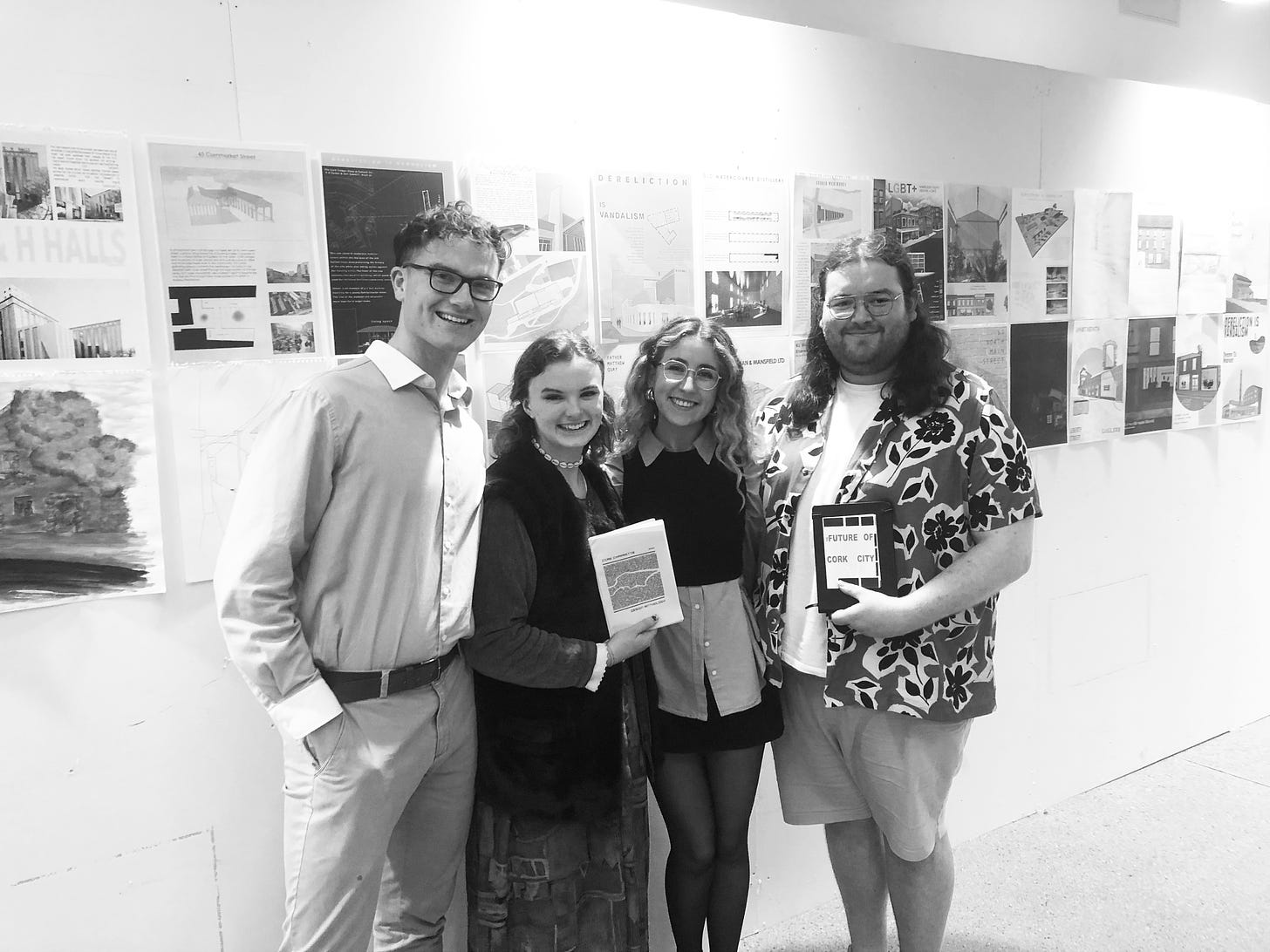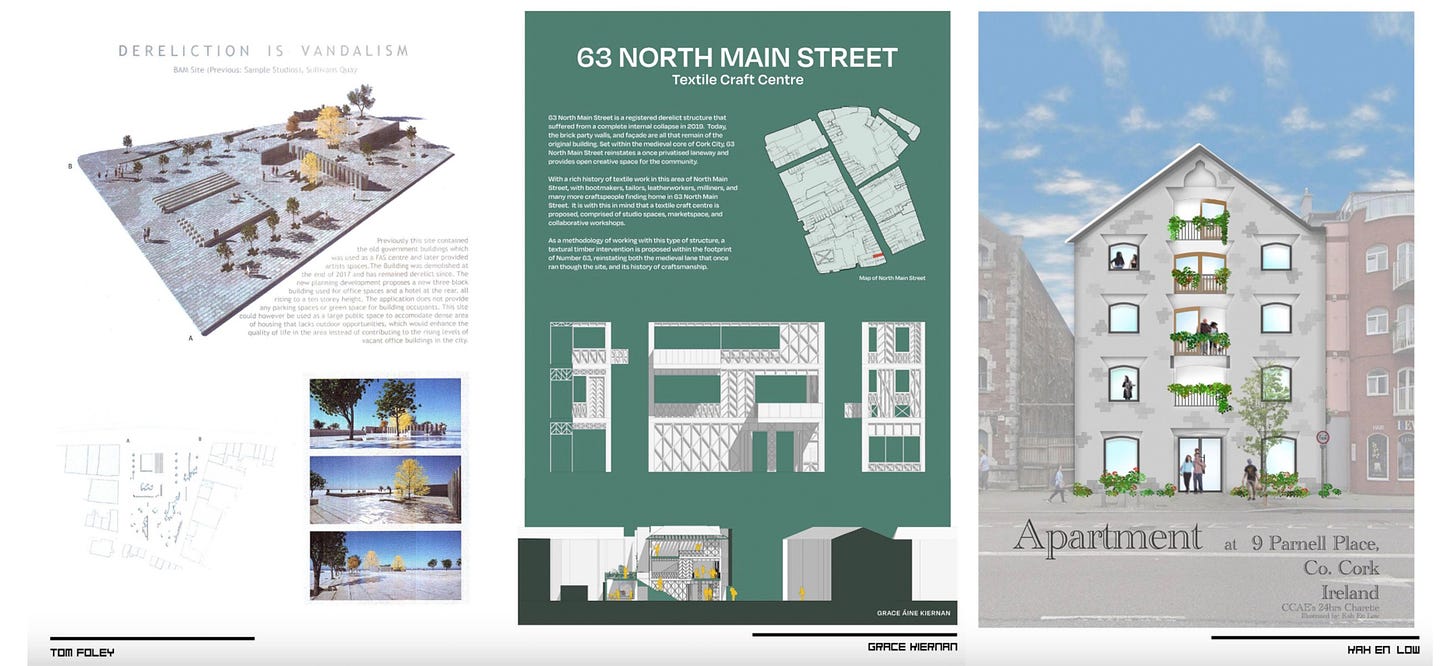Cork architecture students launch their design anthology of solutions to dereliction
The book of designs contains plans for the former FÁS office, the R&H Hall building, North Main St and more.

Architecture students from UCC’s Centre for Architectural Education (CCAE) have launched a booklet of their creative solutions to Cork city dereliction.
The design anthology is the result of a 24-hour sit-in protest held by students last November, and covered by Tripe + Drisheen:
Designs included in the finished book, which you can view online here, include a vision for the site of the former FÁS office as a city park: the building that once housed Sample Studios was demolished in 2018 by contractors working on behalf of BAM construction, who have planning permission for a 220 bed hotel and 8,000 sq metres of office space on the site, which has been surrounded by hoardings ever since the demolition.
The launch was part of the “Future of Cork City” symposium at CCAE this week, where a series of guest lectures, presentations and workshops were held over the two-day event.
The booklet contains designs for many derelict properties that have featured in Tripe + Drisheen’s coverage on dereliction, including 62-65 North Main St and 9 Parnell Place.
The students were in part inspired to stage their own protest by Michelle Delea’s film, The Sprawling Octopus of an Elevated Highway, which told the story of a group of young architects who prevented Cork City from a planning decision for a series of motor overpasses in the late sixties.
Bringing the power of protest to bear on the social issue of dereliction became important to the students after a series of guest lectures by well-known housing and anti-dereliction campaigners, protest organiser Eimear Aherne said at the launch.
“Private investors are making money from sites being left derelict rather than allowing meanwhile use,” she said.
She pointed to the community focus of the range of different functions students had chosen for their designs.
“We were having proposals for community centres, housing and cultural spaces,” she said. “Taken as a point of reference against expensive high-rise apartments, hotels and office spaces, that was what we were trying to work against.”
“There was a lot of talk of façadism, and how large developers will keep a shell of what a building has been in the pretence that they are conserving it, but in reality it’s like hanging a poster on the outside of it and gutting it to make as much profit as possible.”
“84 students out of 140 in the whole college took part in the protest and I was really really happy that everyone stayed and that so many people contributed a drawing to this.”





